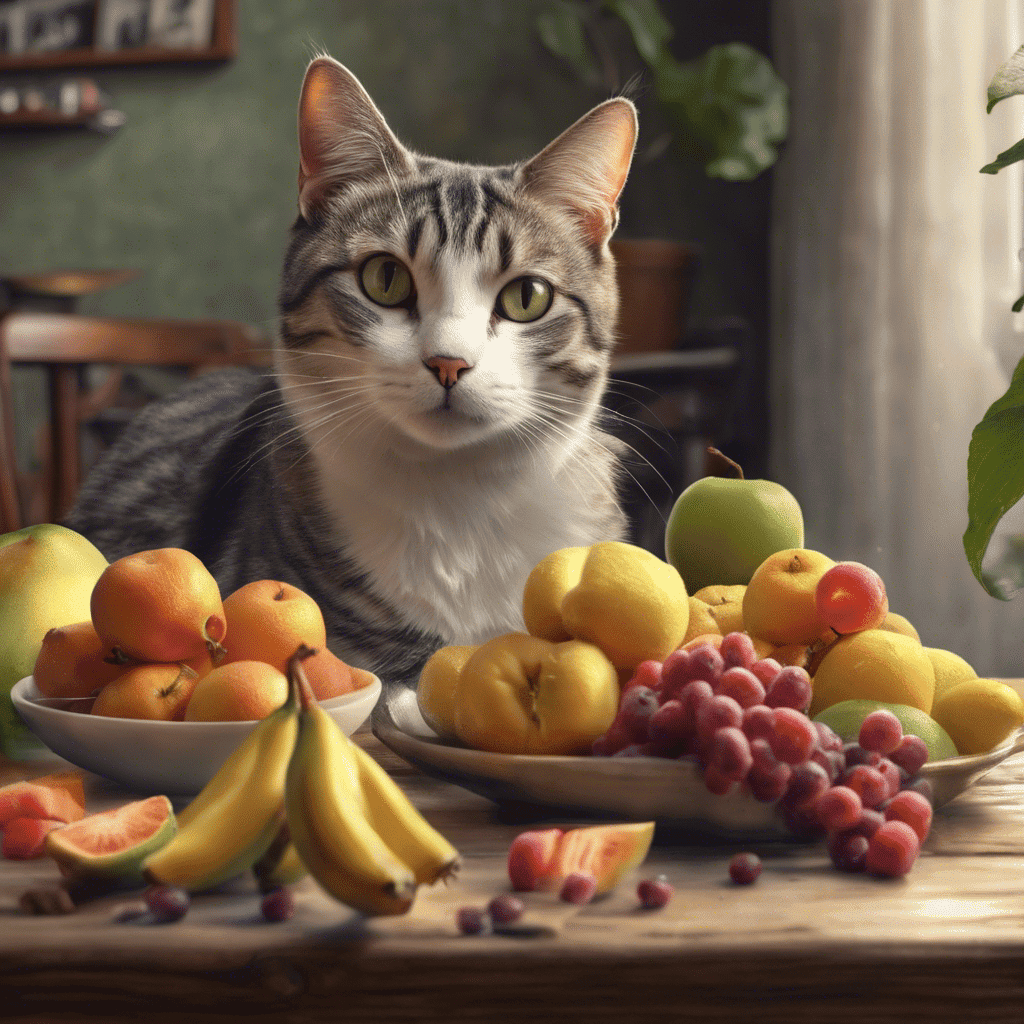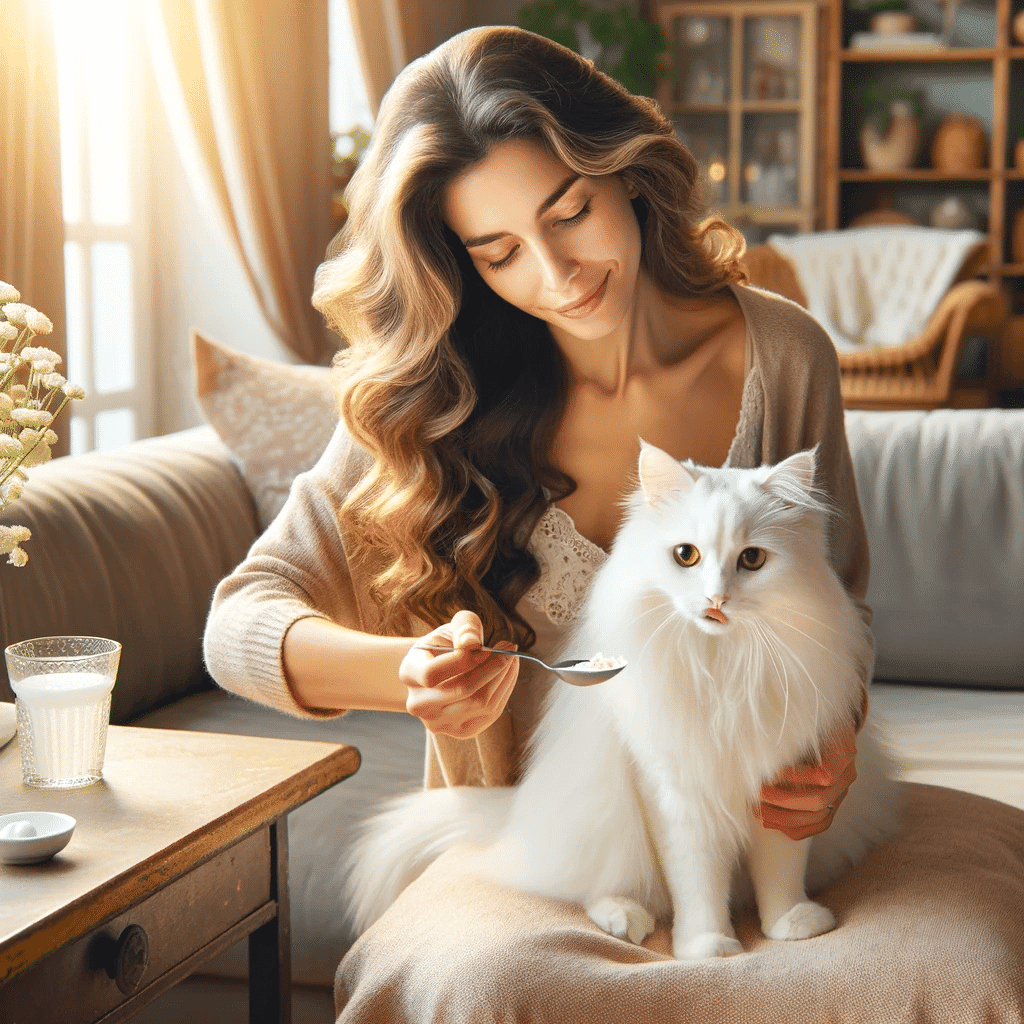
Cleaning your kitten’s eye boogers helps a lot in keeping their eyes healthy and free from irritation. Eye discharge, if left unattended, can lead to discomfort or even infections caused by bacteria like Staphylococcus or viruses such as feline herpesvirus. Using gentle methods ensures your kitten feels safe during the process and avoids unnecessary stress. Regular cleaning also helps prevent crust buildup, which could block tear ducts or worsen existing conditions.
This article will help you understand how to clean kitten eye boogers properly, doing so not only protects their delicate eyes but also strengthens the bond you share with your furry friend.
What You Need to Clean Your Kitten’s Eyes
Cleaning your kitten’s eyes requires the right tools and a gentle approach. Using safe and effective items ensures the process is comfortable for your kitten and reduces the risk of irritation or harm. Below, you’ll find a list of recommended tools and items to avoid.
Safe and Effective Tools
Soft, clean cloth or cotton balls
A soft, clean cloth or cotton ball is essential for wiping away eye boogers without causing discomfort. These materials are gentle on your kitten’s delicate skin and help remove discharge effectively. Always use a fresh cloth or cotton ball for each eye to prevent cross-contamination.
Warm water or saline solution
Warm water or a veterinarian-recommended saline solution works wonders for loosening crusty eye boogers. Saline solutions, such as Sodium Chloride and Ophthalmic Flush, are safe and help maintain the natural balance of your kitten’s eyes. Sterile water or cooled boiled water can also be used if saline is unavailable.
Pet-safe eye wipes (optional)
Pet-safe eye wipes, like those offered by Beloved Pets Eye Cleaner, provide a convenient option for cleaning your kitten’s eyes. These wipes are pre-moistened with gentle solutions that break down tear stains and discharge while soothing irritation. Ensure the wipes are specifically formulated for cats to avoid harmful ingredients.
A second person to help hold the kitten (optional)
If your kitten tends to squirm, having a second person assist you can make the process smoother. They can gently hold your kitten in place, ensuring safety and reducing stress for both you and your pet.
Items to Avoid
Harsh chemicals or soaps
Never use harsh chemicals, soaps, or human cleaning products on your kitten’s eyes. These substances can irritate the sensitive eye area and may cause more harm than good. Stick to products specifically designed for pets, such as Vetericyn Antimicrobial Eye Wash, which is non-irritating and safe for kittens.
Rough or abrasive materials
Avoid using rough towels, paper towels, or any abrasive materials. These can scratch your kitten’s delicate skin and worsen irritation. Always opt for soft, lint-free materials to ensure a gentle cleaning experience.
By using the right tools and avoiding harmful items, you can keep your kitten’s eyes clean and healthy. Proper preparation not only makes the process easier but also ensures your furry friend feels safe and cared for.
How to Clean Kitten Eye Boogers: Step-by-Step Guide
Cleaning your kitten’s eye boogers requires patience and a gentle approach. Following a structured process ensures your kitten feels safe and comfortable while you maintain their eye health. This step-by-step guide will help you understand how to clean kitten eye boogers effectively.
Preparing for the Cleaning Process
Preparation is key to making the cleaning process smooth and stress-free for both you and your kitten. Follow these steps to get started:
Wash your hands thoroughly to prevent introducing bacteria.
Always begin by washing your hands with soap and water. Clean hands reduce the risk of transferring bacteria to your kitten’s eyes, which are highly sensitive to infections.
Gather all necessary supplies and keep them within reach.
Prepare everything you need before you start. This includes a soft cloth or cotton balls, warm water or saline solution, and possibly pet-safe eye wipes. Having these items nearby ensures you can focus on cleaning without interruptions.
Ensure your kitten is calm and comfortable before starting.
Choose a quiet space where your kitten feels relaxed. You can gently hold them in your lap or place them on a soft surface. If your kitten seems restless, try soothing them with a calm voice or gentle petting before beginning.
Cleaning the Eye Boogers
Once you’ve prepared, it’s time to clean your kitten’s eyes. Follow these steps carefully to ensure a safe and effective cleaning process:
Dampen a soft cloth or cotton ball with warm water or saline solution.
Soak a clean cloth or cotton ball in warm water or a veterinarian-recommended saline solution. The warmth helps loosen crusty boogers, making them easier to remove. Avoid using cold water, as it may cause discomfort.
Gently wipe the eye boogers, starting from the inner corner and moving outward.
Hold the damp cloth or cotton ball and gently wipe away the boogers. Always start at the inner corner of the eye and move outward. This direction prevents debris from being pushed into the eye. Use light pressure to avoid irritating the delicate skin around the eyes.
Use a fresh part of the cloth or a new cotton ball for each eye to avoid cross-contamination.
Switch to a clean section of the cloth or a new cotton ball when moving to the other eye. This step prevents the spread of bacteria or dirt between the eyes, reducing the risk of infection.
Aftercare and Monitoring
After cleaning, take a moment to check your kitten’s eyes and provide some positive reinforcement:
Check for any redness, swelling, or unusual discharge.
Inspect your kitten’s eyes for signs of irritation, such as redness, swelling, or excessive discharge. If you notice anything unusual, monitor the symptoms closely and consult a veterinarian if they persist.
Reward your kitten with gentle petting or a treat to create a positive experience.
End the cleaning session on a positive note by rewarding your kitten. Offer a small treat or spend a few minutes petting them. This helps your kitten associate the process with comfort and care, making future cleanings easier.
Regular cleaning not only keeps your kitten’s eyes healthy but also strengthens the bond you share. Knowing how to clean your cat’s eyes properly ensures their comfort and prevents potential issues like infections or blocked tear ducts. With consistent care, you can maintain your kitten’s eye health and overall well-being.
Signs to Watch For in Cat Eye Discharge
Understanding the signs of abnormal cat eye discharge is crucial for maintaining your kitten’s eye health. While occasional clear discharge is normal, certain symptoms may indicate underlying issues that require immediate attention. Recognizing these signs early can help you take the necessary steps to protect your kitten’s vision and overall well-being.
When to Seek Veterinary Help
Some symptoms of feline eye discharge should prompt you to consult a veterinarian. These signs often point to more serious conditions that need professional care:
Persistent or excessive eye discharge
If your kitten’s eyes produce a constant or unusually large amount of discharge, it could signal an infection or another underlying issue. Excessive tearing or sticky, pus-like discharge often accompanies conditions like conjunctivitis or upper respiratory infections.
Redness, swelling, or irritation around the eyes
Red or swollen areas around your kitten’s eyes may indicate inflammation or irritation caused by allergens, infections, or foreign particles. Swelling can also result from blocked tear ducts, which prevent proper drainage and lead to discomfort.
Frequent pawing at the eyes or signs of discomfort
Kittens experiencing eye discomfort often paw at their eyes or squint frequently. This behavior may suggest irritation from dust, pollen, or other irritants. In some cases, it could also indicate pain caused by infections or injuries.
Cloudy or discolored eyes
Cloudy or yellowish eyes often point to infections like conjunctivitis or feline herpesvirus. These conditions can cause significant discomfort and may worsen without treatment. If you notice discoloration, schedule a veterinary visit promptly.
Possible Underlying Causes
Several factors can trigger feline eye discharge. Identifying the root cause helps ensure your kitten receives the appropriate care and treatment.
Eye infections or conjunctivitis
Eye infections are a common cause of cat eye discharge. Conjunctivitis, also known as pink eye, often leads to redness, swelling, and thick discharge. Infections may result from bacteria like Staphylococcus or viruses such as feline herpesvirus. Severe cases can cause the eyelids to stick together, requiring immediate veterinary attention.
Allergies or irritants
Environmental allergens like dust, pollen, or smoke can irritate your kitten’s eyes, leading to watery discharge. Foreign particles, such as dirt or debris, may also cause temporary irritation. Keeping your kitten’s living area clean can help minimize exposure to these triggers.
Blocked tear ducts or other medical conditions
Blocked tear ducts prevent proper drainage, causing tears to accumulate and form discharge. Other medical conditions, such as corneal ulcers or glaucoma, may also contribute to abnormal eye discharge. These issues often require specialized veterinary care to resolve.
|
Common Causes of Feline Eye Discharge |
Symptoms |
Recommended Action |
|---|---|---|
|
Eye infections or conjunctivitis |
Redness, swelling, thick discharge |
Consult a veterinarian immediately |
|
Allergies or irritants |
Watery discharge, frequent pawing |
Reduce exposure to allergens |
|
Blocked tear ducts |
Persistent tearing, crusty discharge |
Seek veterinary advice for treatment |
|
Feline herpesvirus |
Cloudy eyes, yellowish discharge |
Begin antiviral treatment if advised |
Monitoring your kitten’s eye health and recognizing these signs can make a significant difference in their comfort and recovery. If you notice any of these symptoms, act quickly to prevent complications and ensure your kitten receives the care they need.
Prevention Tips to Reduce Cat Eye Boogers
Preventing cat eye boogers requires consistent care and attention to your kitten’s environment, hygiene, and overall health. By following these practical tips, you can minimize the buildup of discharge and keep your kitten’s eyes healthy and comfortable.
Maintain a Clean Environment
A clean living space plays a significant role in reducing irritants that contribute to eye boogers. Here’s how you can create a healthier environment for your kitten:
Regularly clean your kitten’s bedding and living area.
Wash your kitten’s bedding at least once a week using pet-safe detergents. Vacuum and dust their living area frequently to remove dirt, hair, and allergens. A clean space reduces exposure to irritants that can lead to matted eyes or excessive discharge.
Minimize dust, pollen, and other irritants in your home.
Keep windows closed during high-pollen seasons and use air purifiers to filter out dust and allergens. Avoid using strong-smelling cleaning products or sprays near your kitten, as these can irritate their sensitive eyes. Maintaining air quality helps prevent eye irritation and reduces the risk of boogers forming.
Promote Good Hygiene
Good hygiene practices are essential for preventing the buildup of cat eye boogers. Regular grooming and cleaning routines ensure your kitten’s eyes stay clear and healthy.
Clean your kitten’s face and eyes regularly.
Gently clean your cat’s eyes with a damp, soft cloth or cotton ball soaked in warm water. Focus on removing any visible discharge before it hardens into crusty boogers. Make this part of your grooming routine to prevent matted eyes and keep your kitten comfortable.
Use pet-safe products for cleaning when necessary.
For stubborn boogers or tear stains, use veterinarian-approved eye wipes or saline solutions. These products are specifically designed for kittens and help maintain the natural balance of their eyes. Avoid using human products, as they may contain harmful chemicals.
Support Overall Health
A healthy kitten is less likely to experience frequent eye boogers. Supporting their overall well-being strengthens their immune system and reduces the likelihood of eye-related issues.
Provide a balanced diet to boost your kitten’s immune system.
Feed your kitten high-quality food rich in essential nutrients like vitamins A and E, which promote eye health. A balanced diet supports their immune system, helping them fight off infections that could cause excessive discharge.
Ensure your kitten stays hydrated to prevent dryness.
Always provide fresh, clean water to keep your kitten hydrated. Proper hydration prevents dryness in their eyes, reducing the risk of irritation and boogers. If your kitten seems reluctant to drink water, consider using a pet water fountain to encourage them.
|
Prevention Method |
Benefits |
Frequency |
|---|---|---|
|
Clean bedding and living area |
Reduces allergens and irritants |
Weekly |
|
Use air purifiers |
Improves air quality and minimizes eye issues |
Daily |
|
Groom and clean eyes |
Prevents matted eyes and discharge buildup |
2-3 times per week |
|
Provide a balanced diet |
Boosts immune system and overall health |
Daily |
|
Ensure proper hydration |
Prevents dryness and irritation |
Always available |
Taking these preventive steps helps reduce the occurrence of cat eye boogers and ensures your kitten’s eyes remain healthy. Consistency in cleaning, maintaining hygiene, and supporting their health will make a noticeable difference in their comfort and well-being.
Common Mistakes to Avoid When You Clean Your Cat’s Eyes
Cleaning your kitten’s eyes requires care and attention. Mistakes during the process can lead to discomfort or even harm. Avoiding these common errors ensures your kitten stays safe and their eyes remain healthy.
Using Unsafe Products
Avoid using baby wipes or harsh chemicals.
Many pet owners mistakenly use baby wipes or household cleaning products to clean their kitten’s eyes. These items often contain fragrances, alcohol, or other chemicals that irritate sensitive skin and eyes. Even products labeled as “gentle” for humans may not be safe for kittens. Always choose veterinarian-approved solutions, such as saline or pet-safe eye wipes. These products are specifically designed to protect your kitten’s delicate eye area.
|
Unsafe Product |
Why It’s Harmful |
Recommended Alternative |
|---|---|---|
|
Baby wipes |
Contain fragrances and chemicals |
Pet-safe eye wipes |
|
Household cleaners |
Harsh ingredients cause irritation |
Saline solution or warm water |
|
Human eye drops |
Formulated for human eyes, not feline anatomy |
Veterinarian-recommended eye drops |
Being Too Rough
Never scrub or apply excessive pressure to your kitten’s eyes.
Your kitten’s eyes and the surrounding skin are extremely delicate. Scrubbing or pressing too hard can cause irritation, scratches, or even damage to the cornea. Use a soft cloth or cotton ball dampened with warm water. Gently wipe the area without applying force. If the boogers are crusty and hard to remove, let the damp cloth sit on the area for a few seconds to soften them. Patience is key to ensuring a safe and comfortable cleaning experience.
Ignoring Symptoms
Don’t delay seeking veterinary care if symptoms persist or worsen.
Ignoring signs of eye problems can lead to serious health issues. Persistent redness, swelling, or unusual discharge often indicates infections or other underlying conditions. Delaying treatment may worsen the problem, potentially affecting your kitten’s vision. If you notice symptoms like cloudy eyes, excessive tearing, or frequent pawing, consult a veterinarian immediately.
Early intervention prevents complications and ensures your kitten receives the care they need.
|
Symptom |
Possible Cause |
Action to Take |
|---|---|---|
|
Redness or swelling |
Infection or irritation |
Schedule a veterinary appointment |
|
Cloudy or discolored eyes |
Feline herpesvirus or injury |
Seek immediate professional care |
|
Persistent discharge |
Blocked tear ducts or conjunctivitis |
Consult a veterinarian for diagnosis |
Avoiding these mistakes helps protect your kitten’s eyes and ensures a positive cleaning experience. With proper care and attention, you can keep your furry friend comfortable and healthy.
Regularly cleaning your kitten’s eye boogers ensures their comfort and protects their delicate eyes from infections. Use gentle methods like warm water or saline solution to avoid irritation. Monitor their eyes for signs of redness, swelling, or unusual discharge. Early detection of issues can prevent serious conditions, such as infections or blocked tear ducts. If symptoms persist or worsen, consult a veterinarian immediately. Consistent care, combined with routine vet check-ups, supports your kitten’s long-term eye health and overall well-being.
Your attention to their needs fosters a happy and healthy life for your furry companion.

In her previous life, Lisa traveled extensively, both for work and leisure. After the pandemic struck, Lisa locked up her luggage and adopted a cat ever since.
Lisa is now an avid cat lover, she devotes most of her free time serving as butler to her adorable feline at home. When she is not with her cat, she can be seen using her phone sourcing for the latest cat supplies online.


